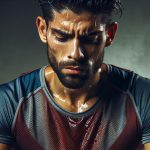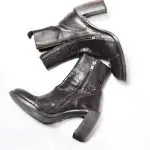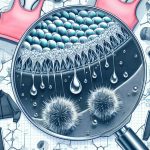When it comes to managing moisture in fabrics, not all fibers play the same role—some prefer to welcome water, while others keep it at bay. If you want your clothing to handle sweat effectively, understanding these subtle differences is key. You might be surprised how the interplay between these fibers can make a significant impact on comfort and performance, especially during physical activities. Let’s explore what sets them apart and why it matters.
Table of Contents
Key Takeaways
- Hydrophilic fibers absorb and pull moisture away from skin, enhancing comfort and breathability.
- Hydrophobic fibers repel water, drying quickly and preventing moisture absorption.
- Hydrophilic fibers spread sweat evenly, promoting evaporation and cooling.
- Hydrophobic fibers minimize moisture retention, ideal for activewear and outdoor gear.
- Combining both fibers balances absorption and drying for optimal moisture management.
Characteristics of Hydrophilic Fibers
Although you mightn’t always notice, hydrophilic fibers actively attract and absorb moisture, making them ideal for comfort and breathability.
You’ll find that their fiber structure includes polar groups that bond easily with water molecules, enhancing moisture retention. This means these fibers pull sweat away from your skin, keeping you dry and comfortable.
Unlike hydrophobic fibers, hydrophilic ones soak up moisture instead of repelling it. When you wear garments made from cotton or rayon, for example, the fiber structure allows water to spread within the fabric, promoting evaporation and cooling.
Properties of Hydrophobic Fibers
Since hydrophobic fibers repel water rather than absorb it, they keep you dry by preventing moisture from soaking into the fabric. You’ll find these fiber types commonly used in textile applications where water resistance is key, like outdoor gear and performance wear. Their non-absorbent nature means they dry quickly and resist stains, making them ideal for active lifestyles.
| Property | Description |
|---|---|
| Water Resistance | Repels water, prevents absorption |
| Drying Time | Dries quickly |
| Common Fiber Types | Polyester, Nylon, Olefin |
| Texture | Smooth, less breathable |
| Applications | Outdoor clothing, upholstery |
Understanding these properties helps you choose the right fabric for moisture management and durability.
How Hydrophilic Fibers Contribute to Moisture Wicking
When you wear clothes made from hydrophilic fibers, they actively pull moisture away from your skin and move it to the fabric’s surface, where it can evaporate quickly.
These fiber types, such as cotton and rayon, have a natural affinity for water, enabling efficient moisture transport. As sweat forms, hydrophilic fibers absorb it immediately, spreading the moisture evenly across the fabric.
This process keeps you feeling dry and comfortable by preventing wet spots and reducing clinginess. The water-attracting nature of these fibers supports quick evaporation, making them ideal for activities where managing sweat is essential.
The Role of Hydrophobic Fibers in Moisture Management
While hydrophilic fibers draw moisture in, hydrophobic fibers repel water to keep you dry.
In fiber applications, hydrophobic fibers play an essential role by minimizing moisture retention, ensuring sweat evaporates quickly rather than soaking into the fabric. This makes them vital for activewear and outdoor gear where staying dry is key.
Imagine how these fibers work in:
- A rain jacket shedding water during a downpour.
- Athletic shirts preventing sweat from clinging to your skin.
- Outdoor tents resisting moisture buildup inside.
Benefits of Combining Hydrophilic and Hydrophobic Fibers
When you combine hydrophilic and hydrophobic fibers, you get enhanced moisture management that keeps you dry and comfortable.
This blend balances absorption and drying, so sweat doesn’t linger.
You’ll notice improved comfort and performance whether you’re active or just going about your day.
Enhanced Moisture Management
Because hydrophilic fibers absorb moisture quickly and hydrophobic fibers repel water, combining them creates a balanced system that manages sweat more effectively.
This synergy enhances sweat regulation and boosts fabric breathability, keeping you comfortable during intense activities.
When these fibers work together, you experience:
- Rapid moisture uptake by hydrophilic fibers pulling sweat away from your skin.
- Hydrophobic fibers creating channels that push moisture outward, accelerating evaporation.
- Improved airflow through the fabric, maintaining breathability and reducing clamminess.
Balanced Absorption and Drying
Combining hydrophilic and hydrophobic fibers gives you fabrics that absorb moisture efficiently and dry quickly. This balance results from unique wicking mechanisms and fiber interactions: hydrophilic fibers pull moisture away from your skin, while hydrophobic fibers help spread it across the fabric surface, speeding evaporation. Together, they create a synergy that neither fiber type achieves alone.
| Feature | Benefit |
|---|---|
| Hydrophilic Fibers | Rapid moisture absorption |
| Hydrophobic Fibers | Quick moisture dispersion and drying |
| Combined Fiber Interaction | Balanced absorption and fast drying |
Improved Comfort and Performance
The way hydrophilic and hydrophobic fibers work together doesn’t just affect moisture management—it also boosts your overall comfort and performance.
When these fibers combine in breathable fabrics, especially in active wear, you get the best of both worlds. Hydrophilic fibers pull sweat away from your skin, while hydrophobic fibers quickly move that moisture to the fabric’s surface for evaporation.
This synergy results in:
- Consistent dryness that prevents chafing and irritation during workouts.
- Enhanced temperature regulation, keeping you cool when it matters most.
- Lightweight, breathable fabrics that don’t cling or feel heavy.
Advanced Materials Enhancing Wicking Performance
When you explore advanced materials, you’ll find they greatly boost wicking performance by efficiently drawing moisture away from the skin.
Smart textiles, for example, integrate moisture sensors that detect sweat levels in real time, allowing the fabric to adapt its wicking properties dynamically.
These materials often combine hydrophilic fibers with innovative coatings or nanostructures that accelerate moisture movement, keeping you dry and comfortable during intense activity.
By using cutting-edge technology, these fabrics not only enhance moisture management but also improve breathability and durability.
As a result, you experience better comfort and performance, especially in demanding conditions.
Embracing these innovations lets you benefit from textiles that actively respond to your body’s moisture, elevating traditional wicking to a new, smarter level.
Environmental Factors Affecting Fiber Wicking Efficiency
How do environmental conditions influence the way fibers wick moisture? When you wear clothing made from wicking fibers, factors like humidity levels and temperature variations play a huge role in their performance.
High humidity slows evaporation, making fibers less effective at pulling moisture away from your skin. Meanwhile, temperature shifts can change how quickly moisture moves through fibers, impacting your comfort.
Consider these environmental influences on fiber wicking efficiency:
- Humidity Levels: Higher humidity means slower moisture evaporation, reducing wicking efficiency.
- Temperature Variations: Warmer temperatures accelerate moisture movement; cooler temps slow it down.
- Airflow: Increased airflow enhances evaporation, boosting wicking action.
Frequently Asked Questions
How Do Washing Methods Affect the Wicking Ability of Hydrophilic and Hydrophobic Fibers?
You might find that washing temperatures and detergent types gently influence fibers’ natural charm; high heat and harsh detergents can dull hydrophilic fibers’ wicking, while hydrophobic ones usually keep their cool, maintaining performance.
Can Fiber Blends Be Customized for Specific Sports or Climate Conditions?
You can customize fiber blends to create sport specific blends that match your needs. Fiber customization lets you optimize moisture management, durability, and comfort, ensuring your gear performs well in different sports or climate conditions.
What Is the Impact of Fiber Aging on Moisture-Wicking Performance?
You’ll notice fiber degradation reduces moisture-wicking efficiency over time, causing increased moisture retention. As fibers age, they lose their ability to pull sweat away, making your gear less comfortable and less effective during workouts.
Are There Eco-Friendly Alternatives to Synthetic Hydrophobic Fibers?
You’d think eco-friendly fibers would be as rare as unicorns, but you’re in luck! Biodegradable fibers and organic cotton offer fantastic alternatives to synthetic hydrophobic fibers, letting you stay green while staying dry and comfy.
How Do Hydrophilic and Hydrophobic Fibers Affect Fabric Breathability?
You’ll find hydrophilic fabric types absorb moisture, increasing retention but reducing breathability. Hydrophobic fibers repel water, enhancing airflow and keeping you dry. Combining both optimizes moisture management and comfort in various conditions.
- Tetron Fabric Suit: Style and Comfort Combined - June 17, 2025
- Tetron Fabric for Bags: Durability and Design Tips - June 17, 2025
- Tetron White Fabric: Style and Application Guide - June 17, 2025







